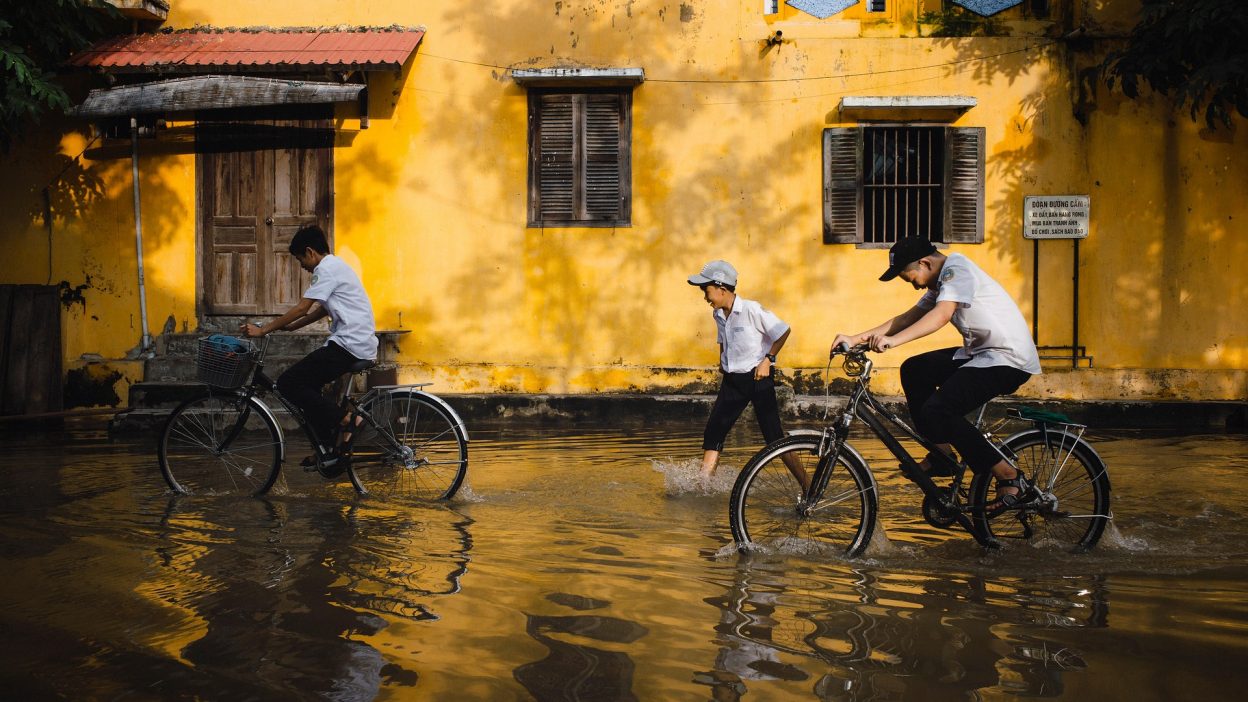A Disaster That Drowned Nations and Shattered Lives
The 2020 South Asian floods unfolded as a nightmare for millions, submerging vast areas, leaving thousands dead, and displacing countless families. The catastrophic monsoon season brought relentless rainfall that overwhelmed India, Bangladesh, Nepal, and Pakistan, exposing deep-rooted flaws in disaster preparedness, government inaction, and fragile infrastructure.
What made this flood particularly devastating was not just nature’s fury but also human negligence. Warnings went ignored, cities lacked flood defences, and emergency response teams struggled to keep up with the growing crisis. With over 2,000 fatalities and billions in damages, the 2020 floods highlighted how South Asia remains alarmingly vulnerable to climate-related disasters.
This blog delves into the causes, the human cost, the failures of governments, and the long-term consequences of one of the deadliest floods in recent history.
1. The 2020 Floods: A Monsoon That Turned Into a Mass Drowning
The annual monsoon season in South Asia is expected to bring heavy rainfall, but 2020 was different—it was relentless, destructive, and catastrophic. Towns disappeared under water, entire families perished, and millions were forced to flee.
The severity of these floods was not an accident. While heavy rains played a role, unchecked urbanisation, deforestation, and poor flood management turned the situation from bad to worse. Rivers burst their banks, roads were swallowed, and those in flood-prone areas had little chance of survival.
With climate change intensifying weather patterns, the 2020 floods became a grim warning of what South Asia might face in the years ahead. Yet, despite repeated disasters, leaders still failed to take meaningful action to prevent such devastation.
2. The Science Behind the Disaster: What Caused the 2020 Floods?
The 2020 monsoon season was one of the wettest in decades, with rainfall exceeding normal levels by a significant margin. Scientists pointed to climate change, which is causing more frequent and intense weather events across the globe. Warmer temperatures increase atmospheric moisture, leading to heavier rainfall and prolonged storms.
However, climate change alone cannot be blamed. The disaster was made worse by human activities:
- Deforestation: Rapid cutting of trees reduced the land’s ability to absorb water, leading to severe soil erosion and landslides in Nepal, India, and Bangladesh.
- Poor urban planning: Cities expanded without proper drainage systems, leaving them vulnerable to even moderate rainfall. As a result, heavy downpours led to instant flooding in major urban areas.
- Overloaded rivers: Large dams and embankments, meant to control flooding, became a problem when they overflowed, worsening the disaster instead of preventing it.
Despite repeated warnings from climate experts, South Asian governments failed to act, allowing the crisis to escalate to unimaginable levels.
3. The Shocking Statistics: Death Toll, Injuries, and Economic Losses
- Fatalities and Injuries
The floods claimed over 2,000 lives, with thousands more reported missing or injured. Many victims drowned in their own homes, while others were swept away by strong currents. In some places, entire villages were wiped off the map overnight. - Mass Displacement
More than 12 million people were forced to flee, many left with nothing but the clothes on their backs. Makeshift camps became overcrowded and unsanitary, leading to outbreaks of waterborne diseases. - Economic Devastation
The floods wiped out billions in economic value, hitting agriculture, infrastructure, and businesses. Farmers in Bangladesh and India lost entire harvests, while roads, bridges, and schools were either severely damaged or completely destroyed. - Worst-Hit Countries
- India: Assam and Bihar were among the hardest hit, with millions stranded and dependent on relief efforts.
- Bangladesh: A third of the country was underwater, affecting more than 5 million people.
- Nepal: Landslides buried villages, leading to mass casualties.
- Pakistan: Sindh and Punjab suffered heavy agricultural losses, worsening food shortages.
- Environmental Consequences
Floodwaters polluted major rivers, destroyed ecosystems, and accelerated deforestation in several regions.
4. The Government’s Failure: A Crisis of Neglect and Incompetence
Despite the scale of destruction, government responses were painfully slow. Victims waited for days as rescue teams failed to reach many flooded areas. In some places, corrupt officials mismanaged relief funds, leaving thousands without food, water, or medical aid.
Governments also ignored early warning signs. Experts had predicted severe flooding, yet authorities failed to prepare evacuation plans, strengthen embankments, or deploy emergency teams in time.
Instead of acting with urgency, leaders downplayed the crisis, leaving millions to suffer the consequences of their inaction.
5. The Hardest Hit: Why the Poor Paid the Heaviest Price
Floods do not affect everyone equally. While wealthier areas had some protection, it was the poorest communities that bore the brunt of the disaster.
- Slum dwellers in Mumbai and Dhaka waded through toxic floodwaters, risking deadly infections.
- Rural farmers lost everything, with no government compensation in sight.
- Families were left homeless, with no choice but to migrate in search of survival.
For the poor, the flood was not just a temporary disaster—it was a sentence to deeper poverty.
6. Disease, Famine, and Despair: The Aftermath of the Floods
In the weeks that followed, a humanitarian nightmare unfolded.
- Waterborne diseases like cholera and malaria surged as contaminated floodwaters became breeding grounds for bacteria.
- Hospitals were overwhelmed, unable to treat the influx of sick and injured.
- Food shortages led to malnutrition, especially among children and the elderly.
To make matters worse, the floods hit in the middle of the COVID-19 pandemic, making relief efforts even more complicated. Camps and shelters became virus hotspots, adding to the misery of those who had already lost everything.
7. Is Climate Change or Government Negligence to Blame?
- Rising temperatures are worsening floods
Scientists have warned that climate change is intensifying monsoon rains, making South Asia more vulnerable than ever. - Deforestation and urban sprawl make floods deadlier
The destruction of natural flood barriers like forests and wetlands has left cities defenceless against rising waters. - Early warning systems failed
Warnings did not reach the most vulnerable communities, leaving millions unprepared. - Future disasters will be even worse
If leaders fail to act, South Asia will see stronger storms, deadlier floods, and mass migration crises in the coming decades.
8. Can South Asia Ever Be Flood-Proof?
Floods are not an unstoppable force—many countries have successfully mitigated their impact through advanced planning, smart infrastructure, and strong policies. Nations like the Netherlands, which regularly face rising sea levels and extreme weather, have built flood-resistant cities with state-of-the-art drainage systems, elevated homes, and controlled river diversions.
So, why hasn’t South Asia done the same? The truth is, governments have prioritised short-term economic growth over long-term resilience. Illegal construction continues in flood-prone areas, deforestation worsens soil erosion, and drainage systems remain outdated and poorly maintained.
If South Asia wants to break free from the cycle of annual floods, the following measures must be implemented:
- Stronger infrastructure – Cities must develop modern drainage networks, reinforced embankments, and flood-proof housing.
- Better forecasting and warning systems – Real-time monitoring and early alerts can save thousands of lives.
- Environmental conservation – Restoring wetlands, forests, and mangroves can act as natural flood barriers.
- Strict urban planning – Governments must halt illegal encroachments and relocate communities from high-risk zones.
Despite these solutions, South Asian governments continue to take a reactive approach—only acting when disaster has already struck. Without proactive planning, the region will continue to suffer deadly floods year after year.
9. Lessons Not Learned: The Next Disaster is Just a Matter of Time
The 2020 South Asian floods were not the first major disaster to devastate the region, and they will not be the last. Despite experiencing catastrophic floods almost every year, governments and policymakers have failed to learn from past mistakes.
Many of the same failures were seen in previous floods:
- Ignored warnings – Despite meteorologists forecasting extreme rainfall, little was done to prepare flood-prone areas.
- Slow emergency response – Rescue teams struggled to reach affected communities in time, leaving thousands to fend for themselves.
- Corrupt relief efforts – Reports emerged of mismanaged aid, food shortages, and unfair distribution of relief materials.
If leaders continue to treat floods as “seasonal problems” rather than national crises, South Asia will never be truly prepared. Experts warn that climate change is only making floods stronger and deadlier. The question is not if another disaster will happen—it is when.
Unless immediate action is taken to improve flood management, strengthen policies, and address environmental degradation, South Asia will be trapped in an endless cycle of destruction and rebuilding.
10. 2020 South Asian Floods: A Tragedy That Must Not Be Forgotten
The devastation of 2020 must not be reduced to just another flood statistic. It was a human tragedy—one that saw thousands perish, millions lose their homes, and entire economies shattered.
The real tragedy, however, is that most of this destruction was preventable. If leaders had taken climate risks seriously, if cities had been built with better planning, and if resources had been allocated efficiently, the death toll could have been much lower.
Ignoring the lessons of 2020 means dooming millions to suffer again in the future. South Asia must act now:
- Invest in flood-resistant infrastructure.
- Implement strict environmental protections.
- Strengthen disaster response mechanisms.
If governments continue to delay action, the region will face even more catastrophic floods in the coming years—with higher death tolls, worse economic damage, and millions more displaced.
The time for excuses is over. The next disaster is already on its way.
FAQs
1. How many people died in the 2020 South Asian floods?
The floods claimed over 2,000 lives, with thousands more injured or missing across India, Bangladesh, Nepal, and Pakistan.
2. What caused the 2020 floods?
A combination of extreme monsoon rains, deforestation, poor urban planning, and climate change led to widespread flooding across South Asia.
3. Which country suffered the most damage?
India, Bangladesh, Nepal, and Pakistan all suffered significant damage, but Bangladesh saw nearly a third of its land submerged, while India’s Bihar and Assam states faced mass displacement.
4. How much was lost economically?
The floods caused billions in damages, destroying homes, roads, bridges, farmlands, and businesses, with the economic impact still being felt years later.
5. Will South Asia continue to suffer from deadly floods?
Yes—without serious reforms, South Asia will face even deadlier floods in the coming years due to climate change, weak policies, and rapid urban expansion in flood-prone areas.




